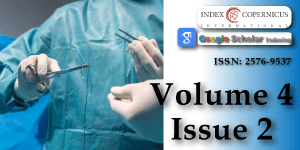When conservative treatment in trachea laserations?
Main Article Content
Abstract
Introduction: The tracheobronchial injuries are usually fatal and some of the lucky people can reach emergency services without dying in the place of trauma. They can cause severe symptoms which can be lifetreathing. This type of injuries must been taken carefully and need to decide fast what treatment you going to give.
Case report: We present a 53 years old patient who has been stabbed during a fight and got his trachea ruptured. His complaints shortness of breath and neck swelling. He can be treated conservatively with bronchoscopic and clinical evaluation.
Discussion: Tracheobronchial injuries are life-threatening and the airway must be secured first. They can be treated conservatively in some cases. CT can be useful but fiberoptic bronchoscopy is the key in diagnosis.
Conclusion: Although early treatment of tracheal lacerations is urgent surgery, it is reported that these injuries can be treated with conservative methods under appropriate conditions.
Article Details
Copyright (c) 2020 Nurdağ A, et al.

This work is licensed under a Creative Commons Attribution 4.0 International License.
Carretta A, Melloni G, Bandiera A, Negri G, Voci C, et al. Conservative and surgical treatment of acute posttraumatic tracheobronchial injuries. World J Surg. 2011; 35: 2568-2574. PubMed: https://www.ncbi.nlm.nih.gov/pubmed/21901327
Gómez-Caro A, Ausin P, Moradiellos FJ, Díaz-Hellín V, Larrú E, et al. Role of conservative medical management of tracheobronchial injuries. J Trauma 2006; 61: 1426-1434. PubMed: https://pubmed.ncbi.nlm.nih.gov/17159686/
Kieser AC, O’Brien SM, Detterbeck FC. Blunt Tracheobronchial Injuries: Treatment and Outcomes, Ann Thorac Surg. 2001; 71: 2059-2065. PubMed: https://pubmed.ncbi.nlm.nih.gov/11426809/
Hahn B. Tracheabronchial Rupture. J Emerg Med. 2007; 33: 193-194. PubMed: https://www.ncbi.nlm.nih.gov/pubmed/17692774
Özdülger A. Trakeobronşiyal yaralanmalar. TTD Toraks Cerrahisi Bülteni. 2010; 1: 45-54.
Baumgartner D, Sheppard B, de Virgilio C, Esrig B, Harrier D, et al. Tracheal and main bronchial disruptions after blunt chest trauma: Presentation and management. Ann Thorac Surg 1990; 50: 569-574. PubMed: https://www.ncbi.nlm.nih.gov/pubmed/2222045
Balcı AE. Trakeobronşiyal Yaralanmalar. Türkiye Klinikleri J Surg Med Sci. 2007; 3: 52-62.
Koletsiz E, Prokakis C, Baltayiannis N, Apostolakis E, Chatzimichalis A, et al. Sugical decision making in tracheobronchial injuries on the basis of clinical evidences and injury’s anatomical setting: A Retrospective Analysis Injury. 2012; 43: 1437-4141. PubMed: https://www.ncbi.nlm.nih.gov/pubmed/20863493
Schneider T, Konstantina S, Dienemann H. Management pf Iatrogenic Tracheobronchial Injuries: A Retrospective Analysis pf 29 Cases. Ann Thorac Surg. 2007; 83: 1960-1964. PubMed: https://pubmed.ncbi.nlm.nih.gov/17532378/





